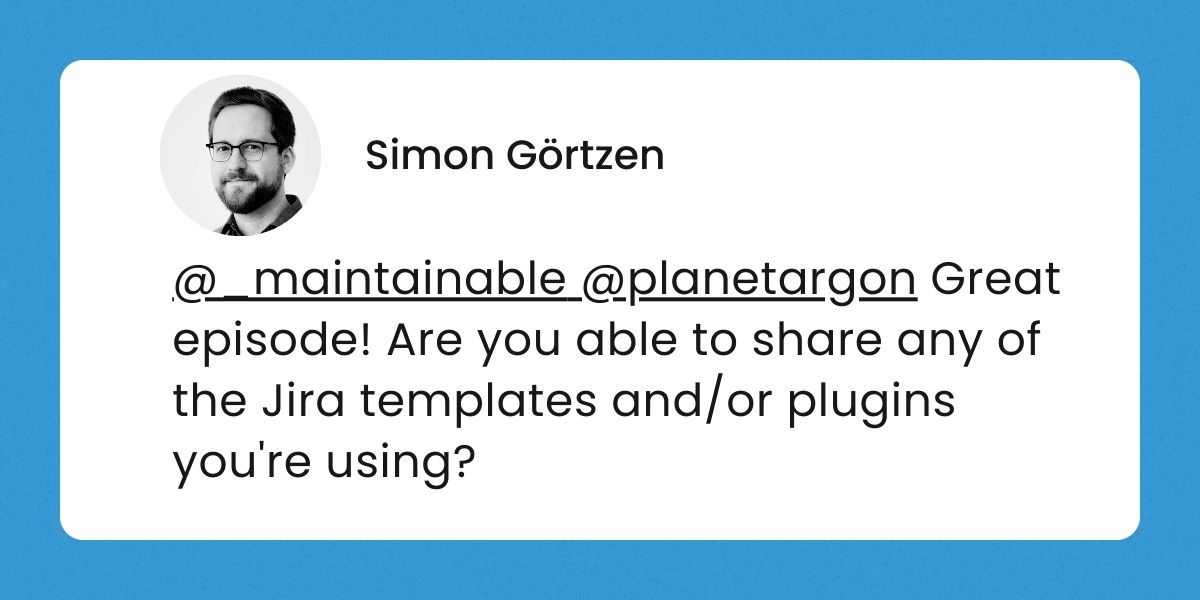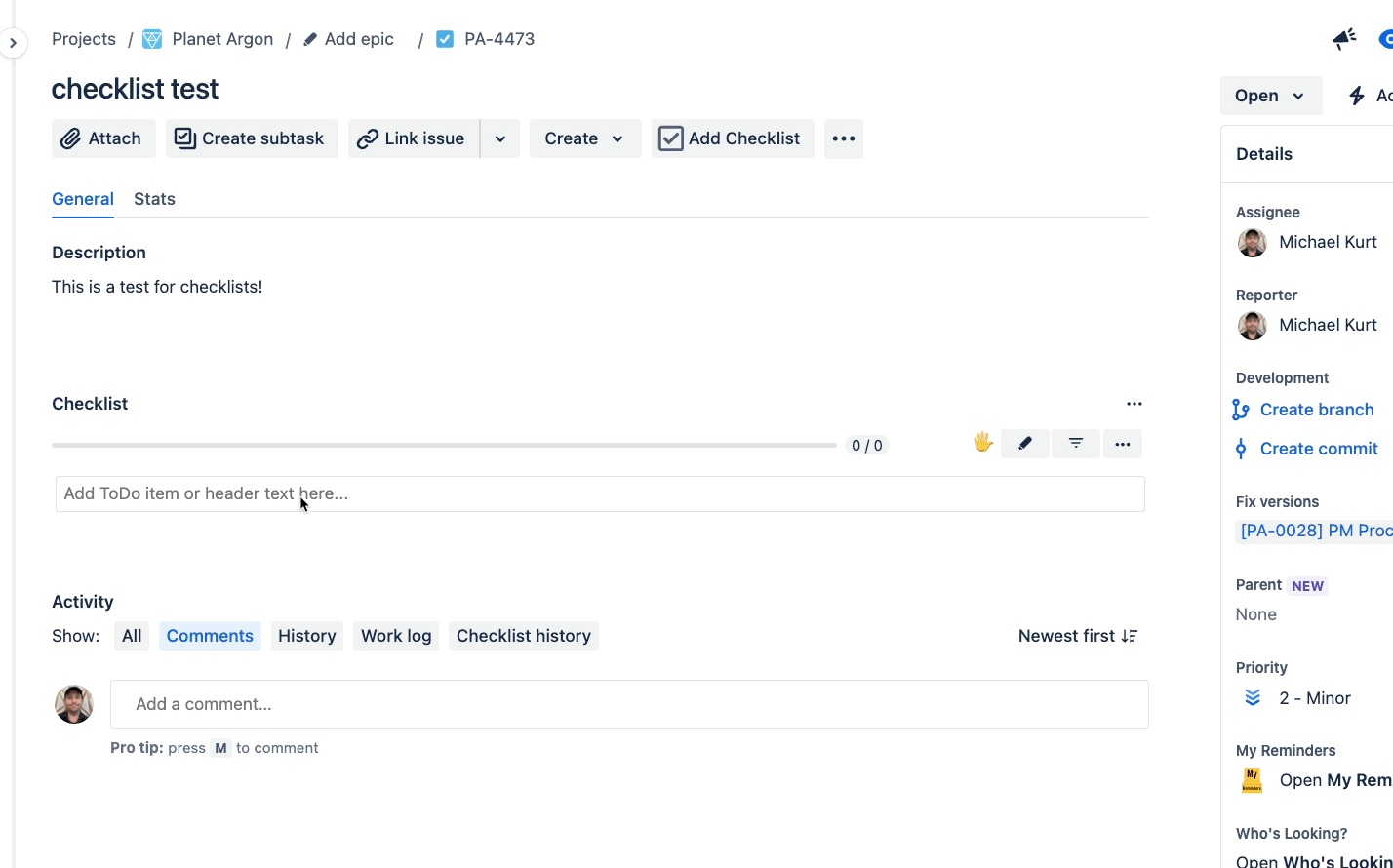Eliminate Friction with Jira Templates and Checklists
Reading time: ~ 2 minutes

We reflected on the following question we were tagged in after a Maintainable Software Podcast episode, and here’s a more in-depth answer that wouldn’t fit into 140 characters!

Working with a big software program like Jira can sometimes be overwhelming for new users. Even if a development team has experience using Jira, a new client might have a different experience. This could cause apprehension as teams learn to acclimate to new products and processes.
We try to make things as easy as possible by removing friction, eliminating unknowns, and ensuring the applications we use have reliable experiences for our clients and developers. Sometimes, tools like Jira are complicated and have an inherent friction for people who don’t use them daily.
But don’t worry! Atlassian has a big marketplace for apps that allow you to add on features like creating issues from templates, adding checklists, and custom time tracking features. Here are two of the Jira apps that we use every day.
Make Jira work for you with Templates!
Jira can be a behemoth, especially for a small agency. It can have different workflows, views, and required fields for different sets of tasks. There are reports, charts, notifications, and everything else! But sometimes, you just need to make sure you can make the ticket and get the information when you need it.
Templates can be a huge help to get you on track. At Planet Argon, we use templates to ensure we capture all the required information to start a software development project. This template contains a user story, acceptance criteria, required permissions, and a few technical questions to prompt the ticket maker to identify critical parts of the request. Then, for a bug fix request, we might change the template to account for things like:
- If the error is new or if it has happened before
- Steps a developer would take to reproduce the error
- Any recent changes made on the client side of the application
- The urgency of the fix
For our templates, we use a Jira App called “Issue Templates for Jira” by the developer Deviniti, which requires a subscription to use in your instance of Jira.
If you need help with tickets coming into Jira from customer requests without the required information, Issue Templates for Jira is a great way to start the request process on the right foot. This will require some training upfront for clients, as you have to create an issue from the template either from the sidebar in Jira or from the top-level navigation submenu “Apps.”
One nice feature of Issue Templates for Jira is that you can apply a template to an existing request later. So, if a ticket requester needs help with the process, it can still be used!
Add Issue Checklists to Breakdown Issues.
Another excellent Jira App we use is Issue Checklist for Jira, developed by HeroCoders. This is a very practical App add-on that we use weekly! Adding a checklist to an issue helps break down tasks or subtasks even further. Sometimes, a subtask is too big for what needs to be done on an issue. A checklist allows a developer or project manager to quickly type out tasks, rearrange the order, and break the tasks into sections.

There is a Pro version of the Issues Checklists for Jira that will also allow you to create more detailed notes in each checklist item, including links and bullet points. Also, in this version, you can assign a checklist item to a user, set a due date, and reference an issue key in Jira.
If you’re interested in trying out the app Issue Checklist for Jira, a free version works really well!
Other Ways Jira Can Help
We've compiled our best Jira help articles so you can easily find more ways to use Jira in your organization.